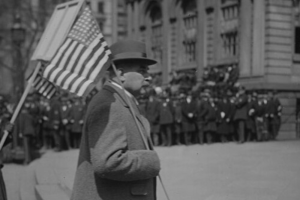James Piermont Morgan, born on April 17, 1837, in Hartford, Connecticut, left an indelible mark on American finance, shaping the nation's economic landscape in ways that are still evident today. A prominent financier, banker, and philanthropist, Morgan played a pivotal role in the development of the United States during the late 19th and early 20th centuries.
Morgan's journey into finance began with a solid foundation. Unlike many of his contemporaries, he did not face poverty, growing up in luxury as the son of a successful banker and owner of JM Beebe, a leading dry goods exporter. Under his father's guidance, Morgan learned the intricacies of business from a young age.
At the age of 21, he embarked on his path to financial dominance by learning the ropes of American banking at the esteemed Sherman and Co. His career took a significant turn in 1871 when he partnered with Anthony Drexel to establish Drexel, Morgan and Co., later becoming J.P. Morgan and Co. This financial powerhouse, headquartered at 23 Wall Street, became a symbol of Morgan's unwavering influence.
Morgan's financial prowess extended beyond traditional banking. He actively invested in railroads, reorganizing major players in the industry and arranging mergers that would shape American corporations. In 1892, he orchestrated the merger of Edison General Electric and Thomson-Houston Electric, leading to the creation of General Electric. In 1901, he facilitated the consolidation of Carnegie Steel Company into the United States Steel Corporation, the world's first billion-dollar company.
During the Panic of 1907, a financial crisis that paralyzed Wall Street, Morgan took charge, rallying New York bankers to pledge their assets and provide liquidity to the faltering financial system. His intervention played a crucial role in stabilizing the economy.
Beyond finance, Morgan was a significant patron of the arts. His contributions to the Metropolitan Museum of Art helped elevate it to global prominence. He also held deep interests in the natural sciences, serving as a trustee for the American Museum of Natural History for 44 years.
Morgan's philanthropic endeavors extended to the Episcopal Church, where he dedicated time to theological discussions and supported the construction of Manhattan's Cathedral of St. John the Divine.
As one of America's foremost financiers, art collectors, and philanthropists, Morgan's legacy is embedded in the nation's history. His impact on the steel industry, financial stability, and cultural institutions makes him a central figure in America's transformation during the Industrial Revolution. Today, he is remembered as a multifaceted character who left an enduring imprint on the nation's finance, arts, and philanthropy.




















